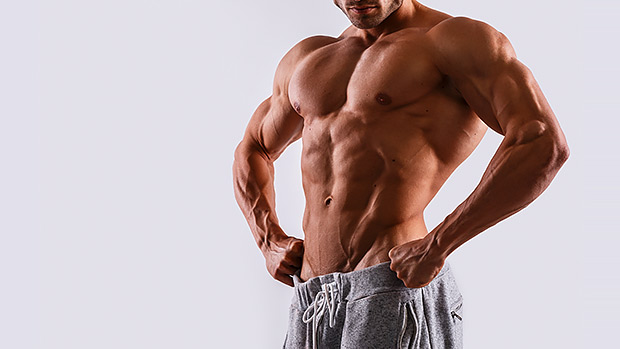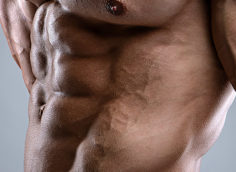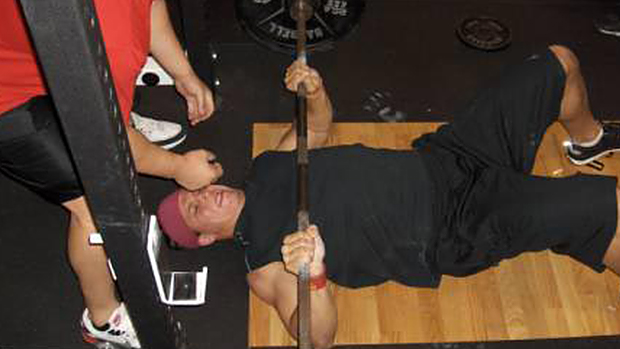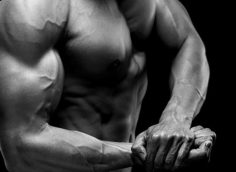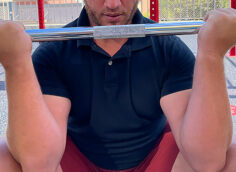An injury or joint pain doesn't have to cancel your workout. It may seem like you can't make gains when your shoulders are aggravated by the bench press, your knees hurt after squats, and back issues arise when doing deadlifts. But you can.
And don't think you're stuck with a bunch of boring "corrective" exercises. Here's how to build muscle and strength while sparing your joints.
We've got two different total-body, joint-friendly workouts for you: one for the gym, and one for home using only bands. Both will help you work around sensitive spots and give you the stimulus you need to make gains in strength and performance.
Do the exercises designated with 1 and 2 (like A1 and A2) as paired sets, and do exercises with 1, 2, and 3 (like A1, A2, and A3) as tri-sets. Do all sets of a given paired set or tri-set before moving to the next one.
Rest 30-60 seconds between exercises within a paired set or tri-set. Rest 1-2 minutes after completing each round of a paired set or tri-set. Adjust the rest periods according to your fitness level. Need more rest? Take it.
The majority of this workout can be done on a dual weight stack machine or functional trainer.
- A1. Single-Arm Lat Pull-In: 4 x 8-10 each side
- A2. Prowler Backward Drag or Push: 3 x 10-15 yards each way
If doing the lat pull-in with your arm out to your side hurts your shoulder, try it with your arm in front of you shoulder as if you were doing a neutral grip chin-up.
Although the weight sled is primarily known for its conditioning value, it can also be highly productive for lower-body strength development in a joint/spine-friendly way.
If you don't have access to a sled, simply do the NT Loop low linear walks (a band-resisted backpedal) at a steady-pace for 60 seconds. See exercise A2 of the finisher in the at-home workout below.
- B1. Decline Cable Press: 4 x 10-12
- B2. Landmine Glute Lunge: 3 x 8-10 each side
This press variation can be the most efficient exercise for the pecs while minimizing shoulder joint stress.
The landmine set-up allows you to lean forward, which helps minimize unwanted knee and low back stress.
- C1. Seated Scapular Row: 3 x 12-15
- C2. Half Kneeling Landmine Press: 3 x 8-10 each side (eccentric-emphasis)
Set the pulleys for an "out to in" motion to hit the mid-back and minimize shoulder involvement.
The combination of a half-kneeling position and landmine set-up provides a vertical/diagonal press position that limits shoulder stress.
- D1. Seated Leg Curl: 3 x 8-10
- D2. Band Kettlebell Deadlift: 3 x 12-20 (NT Loop around hips, with posterior anchor)
No seated leg-curl machine? Just do a stability-ball leg curl.
Using a kettlebell for the deadlift brings the weight closer to the body's center, meaning far less demand on the low back.
- E1. Single-Arm Cable Triceps Compound Set: 3 x 8 each side
- E2. Single-Arm Cable Biceps Compound Set: 3 x 8 each side
- F1. Kneeling Cable Crunch: 2-3 x 10-12
- F2. Seated Cable Posterior Flye: 2-3 x 12-15
- F3. Dumbbell Single-Leg Calf Raise: 2-3 x 8-10 each side
On the kneeling cable crunch, emphasize posterior pelvic tilt and do a 3-second hold at bottom of each rep. Do a 3-second hold in stretch position each rep and a 2-second hold in peak contraction.
On the seated cable posterior flye, think of moving "south east and south west" with your hands to emphasize posterior delts.
Air Bike Ladders
Warm-Up: One minute at a steady ascending pace.
- 30-second sprint (RPE 6): 30-second recovery
- 25-second sprint (RPE 7): 35-second recovery
- 20-second sprint (RPE 8): 40-second recovery
- 15-second sprint (RPE 9): 45-second recovery
- 30-second sprint (RPE 7): 30-second recovery
- 25-second sprint (RPE 8): 35-second recovery
- 20-second sprint (RPE 9): 40-second recovery
- 15-second sprint (RPE 10): 45-second recovery
Cooldown: One minute at a steady descending pace.
*RPE stands for rate of perceived exertion.
Don't let the lack of iron fool you! This workout will even challenge the advanced. You can use a rubber Superband, but I'm using the NT Loop bands because they're far more comfortable and stable.
- A1. Chin-Up: 4 x 4-8
- A2. Single-Leg Knee-Tap Squat: 3 x 6-10 each side
The knee-tap squat is both back and knee friendly. You're not carrying a big load on the spine yet still challenging your lower body. Plus, you can adjust your torso lean to be a bit more forward, which transfers some force away from your knees and emphasizes your hips more.
- B1. Resisted Push-Up: 4 x 8-15
- B2. Single Hip Lift: 3 x 12-15 each side
If the bottom of your push-up is where you get shoulder pain, simply shorten the range of motion until it's pain-free. The beauty of the band resistance is that it still makes push-ups very challenging at the top.
The single-leg hip lift is an awesome posterior chain alternative for those who get back pain when doing RDLs.
- C1. One-Arm Cable Row: 3 x 15-20 each side
- C2. Pec Flye: 2 x-20 each side
- C3. Single-Leg Curl: 2 x 15-20 each side
The one-arm cable pec flye is great because it places the load much closer to your shoulder joint, giving you a mechanical advantage while also not demanding you move your arm into the stretched position where most people get shoulder pain.
- D1. Faceaway Biceps Curl: 3 x 12-15 each side
- D2. Leg Lowering: 2 x 45 seconds
- D3. Glute Walk: 2 x 45 seconds
- E1. Compound Straight-Arm Pulldown: 3 x 15-20
- E2. Triceps Pressdown: 3 x 15-20
It can be tough to find exercises that really challenge your quads when the traditional quad-oriented exercises give you knee pain. That's why this finisher is so awesome. It'll have your quads screaming without making your knees hurt. Do the exercises back to back without rest:
- F1. Straight Leg Walk: 2 x 45 seconds
- F2. Low Linear Walk: 2 x 45 seconds
- F3. Reverse Nordic: 2 x 10-15
Rest 1-2 minutes between rounds.
Improve your shoulder health on your off days. On the days between your workouts, do the Shoulder Health 10 (SH10) program.
It's ten supplementary exercises that address the three most significant causes of preventable shoulder problems. Make them resilient and you'll be able to build them again.
T Nation earns from qualifying purchases as an Amazon Associate. Read more about our policy.

